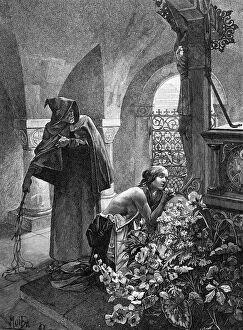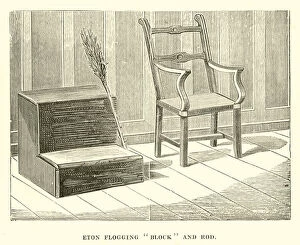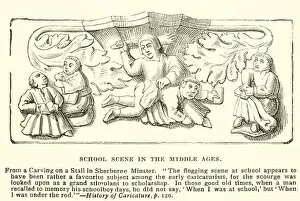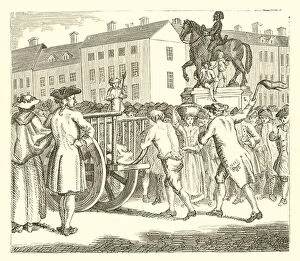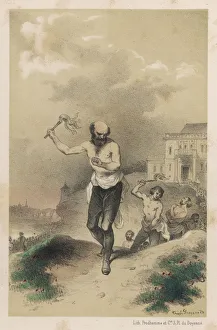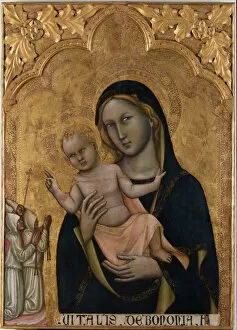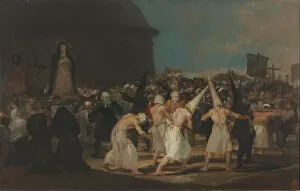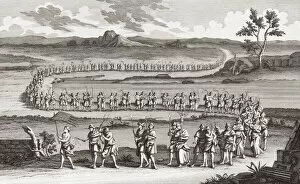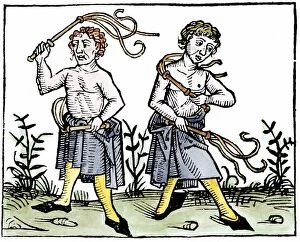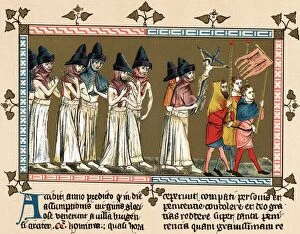Flagellants Collection
Flagellants were individuals who engaged in the practice of self-flagellation as a form of religious devotion or penance
All Professionally Made to Order for Quick Shipping
Flagellants were individuals who engaged in the practice of self-flagellation as a form of religious devotion or penance. This ancient ritual, often associated with extreme acts of discipline and mortification of the flesh, has been documented throughout history. One notable figure in flagellant history is St. Elisabeth Flagellated, whose story is immortalized in an old carved whipping block preserved in the crypt of St. Martin's Church in London. The engraving on this block depicts scenes from her life, showcasing her dedication to self-inflicted punishment. Whipping implements were commonly used by flagellants during their rituals, as depicted in another engraving. These tools served as instruments for inflicting pain upon oneself as a means to atone for sins or seek divine intervention. In medieval times, even educational institutions like Eton practiced flogging using a "block" and rod, which can be seen portrayed vividly in an engraving from that era. Such scenes reveal how corporal punishment was deeply ingrained within society's disciplinary practices. Public whippings were not uncommon occurrences either; one engraving showcases a public whipping taking place at the London Sessions House Yard. These spectacles aimed to publicly shame wrongdoers while simultaneously serving as a deterrent for potential offenders. Notorious criminals also faced severe punishments through public whippings. For instance, Titus Oates endured the scourging journey from Newgate to Tyburn - an event captured through engravings that depict his agonizing ordeal. Another infamous individual subjected to such humiliation was Stroud, known as a cheat who was whipped at the Cart's-Tail from Charing Cross to Whitehall according to yet another engraved illustration capturing this scene. The belief that devils would possess men and force them into self-flagellation is highlighted by Abbe Boileau's quote: "Devils would often lay hold of men and flog them. " Engraved depictions of this belief further emphasize the spiritual significance attached to flagellation.


